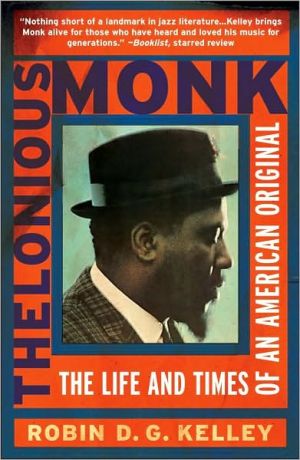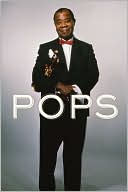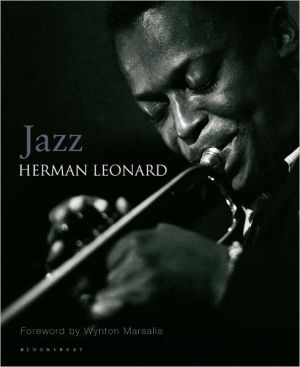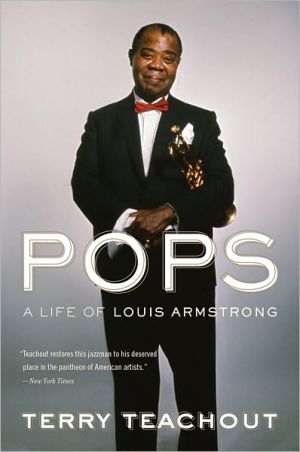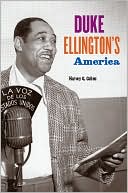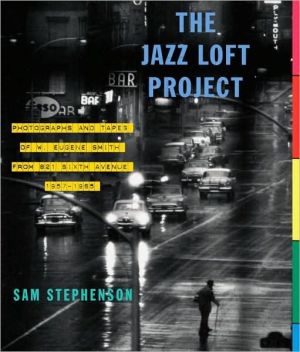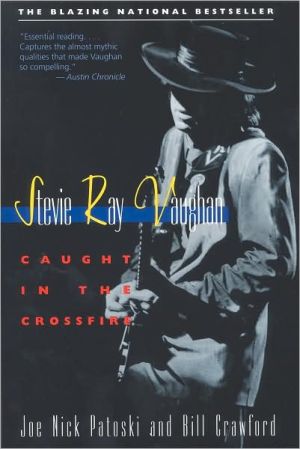Thelonious Monk: The Life and Times of an American Original
THELONIOUS MONK is the critically acclaimed, gripping saga of an artist’s struggle to “make it” without compromising his musical vision. It is a story that, like its subject, reflects the tidal ebbs and flows of American history in the twentieth century. To his fans, he was the ultimate hipster; to his detractors, he was temperamental, eccentric, taciturn, or childlike. His angular melodies and dissonant harmonies shook the jazz world to its foundations, ushering in the birth of “bebop” and...
Search in google:
"The piano ain't got no wrong notes!" So ranted Thelonious Sphere Monk, who proved his point every time he sat down at the keyboard. His angular melodies and dissonant harmonies shook the jazz world to its foundations, ushering in the birth of "bebop" and establishing Monk as one of America's greatest composers. Yet throughout much of his life, his musical contribution took a backseat to tales of his reputed behavior. Writers tended to obsess over Monk's hats or his proclivity to dance on stage. To his fans, he was the ultimate hipster; to his detractors, he was temperamental, eccentric, taciturn, or childlike. But these labels tell us little about the man or his music. In the first book on Thelonious Monk based on exclusive access to the Monk family papers and private recordings, as well as on a decade of prodigious research, prize-winning historian Robin D. G. Kelley brings to light a startlingly different Thelonious Monk — witty, intelligent, generous, politically engaged, brutally honest, and a devoted father and husband. Indeed, Thelonious Monk is essentially a love story. It is a story of familial love, beginning with Monk's enslaved ancestors from whom Thelonious inherited an appreciation for community, freedom, and black traditions of sacred and secular song. It is about a doting mother who scrubbed floors to pay for piano lessons and encouraged her son to follow his dream. It is the story of romance, from Monk's initial heartbreaks to his lifelong commitment to his muse, the extraordinary Nellie Monk. And it is about his unique friendship with the Baroness Nica de Koenigswarter, a scion of the famous Rothschild family whose relationship with Monk and other jazz musicians has long been the subject of speculation and rumor. Nellie, Nica, and various friends and family sustained Monk during the long periods of joblessness, bipolar episodes, incarceration, health crises, and other tragic and difficult moments. Above all, Thelonious Monk is the gripping saga of an artist's struggle to "make it" without compromising his musical vision. It is a story that, like its subject, reflects the tidal ebbs and flows of American history in the twentieth century. Elegantly written and rich with humor and pathos, Thelonious Monk is the definitive work on modern jazz's most original composer. The New York Times - August Kleinzahler Musicians—particularly jazz musicians of Monk's period, and most especially Monk, taciturn and gnomic in utterance by nature—tend not, as writers do, to write hundreds of letters sharing with intimates what is going on in their hearts or heads. A biography of Monk, perforce, has to rely on the not always reliable, often conflicting, memories of others. Instinct is involved, surely as much as perspicacity, in sifting through the mass of observation and anecdote. The Monk family appears to have shared private material with Kelley that had hitherto been unavailable. This trust was not misplaced. There will be shapelier and more elegantly written biographies to come—Monk, the man and the music, is an endlessly fascinating subject—but I doubt there will be a biography anytime soon that is as textured, thorough and knowing as Kelley's. The "genius of modern music" has gotten the passionate, and compassionate, advocate he deserves.
Ï»¿\ PRELUDE\ I have a choice here between writing about Monk as he is, or as he seems to be, and is generally thought to be. There isn't any great difficulty about it, because both sides are fertile ground; the stories merely differ in plausibility.\ Critic Paul Bacon, 1949\ Benetta Smith — known affectionately as "Teeny" — loved to visit her Aunt Nellie and Uncle Thelonious. For a kid growing up in the late '50s and early '60s, the Monks' tiny ground-floor apartment at 243 West 63rd Street, must have seemed almost carnivalesque. Uncle Thelonious sat at the piano turning Christmas carols into Monk originals, or holding forth with a string of friendly put-downs or challenging questions about the ways of the world. Aunt Nellie chatted away, sometimes entertaining the kids with wild and wonderful stories, sometimes cursing booking agents, managers, and anyone else who took advantage of her dear husband, sometimes gently scolding one of her nieces not to "bang" on the piano. Their two children, "Toot" (Thelonious, Jr.) and "Boo Boo" (Barbara), added to the drama and the fun; they were full of energy, and their parents encouraged them to express themselves freely. The apartment and the neighborhood became a playground for Teeny's six siblings, as well as her cousins and their family friends. Uncle "Baby," Thelonious's younger brother Thomas, lived a couple of doors down, so his four children were always in the mix.\ Like all his nieces and nephews, Teeny treated her uncle as an uncle — not as some eccentric genius or celebrity. During one of her many visits in 1959 or '60, when she was about twelve years old, Teeny noticed a book of compositions by Chopin perched on her uncle's rented Steinway baby grand piano. Monk's piano was notorious for its clutter. It occupied a significant portion of the kitchen and extended into the front room. The lid remained closed, since it doubled as a temporary storage space for music, miscellaneous papers, magazines, folded laundry, dishes, and any number of stray kitchen items.\ Teeny thumbed through the pages of the Chopin book, then turned to her uncle and asked, "What are you doing with that on the piano? I thought you couldn't read music? You can read that?" The challenge was on. In response, Monk sat down at the piano, turned to a very difficult piece, and started playing it at breakneck speed.\ "His hands were a blur," she recalled decades later. "Then after he was through, he jumped up from the piano and just started grinning. So then I said, 'You didn't play that right.'"\ "Whaaaa? What are you talking about? I played it ten times faster than anyone could!"\ Teeny sassed back, "It is supposed to be played adagio and you played it allegro."\ Monk loved that kind of one-upmanship, the playful banter, challenges from those who weren't afraid to engage him. And he was proud of his family, including Teeny's burgeoning knowledge of music.\ For well over half a century, the press and the critics have portrayed Monk as "eccentric," "mad," "childlike," "brooding," "naïve," "intuitive," "primitive," even "taciturn." As Nat Hentoff, one of the few critics who got to know Monk, observed: "Monk...became a stock cartoon figure for writers of Sunday-supplement pieces about the exotica of jazz. Pictures of Monk in dark glasses and goatee would usually be captioned 'Mad Monk' or 'The High Priest of Bop.' Exaggerated stories of his personal life were the 'substance' of the articles. There was no attempt to discuss the nature or seriousness of his musical intentions." Journalist Lewis Lapham's sympathetic portrait of Monk for the Saturday Evening Post is typical of much of the writing about Monk. He described Thelonious as an "emotional and intuitive man, possessing a child's vision of the world, Monk talks, sleeps, eats, laughs, walks or dances as the spirit moves him." He was said to be uncommunicative, and music was the only way he could communicate. He supposedly lived in his own little world, exiled from reality, and had no interest in anything except his music and himself. The only music that interested him was his own, or the pop tunes and old standards that he transformed into his own idiom.\ Even his fans and defenders made authoritative statements about Monk's lack of interest and/or knowledge of other musical genres — especially classical music. In what was intended to be a genuine compliment, French critic André Hodeir insisted that this "true jazzman" had no interest in "serious music." He assured his readers that "no twelve-tone sirens have lured Monk away from jazz. He probably doesn't even know that such music exists. I can safely say that the gradual development of his language has been the result of intuition and intuition alone." Pianist, critic, and educator John Mehegan said much the same thing in a 1963 essay. "The entire body of resources of Western man," he mused, "relating to the playing of the piano, which dates back to the sixteenth century, remains unknown to Thelonious Sphere Monk for the simple reason that Monk is not Western man. He is a Black man." Even fellow jazz pianist Bill Evans famously stated that Monk's "unique and astoundingly pure music" can be explained by his lack of "exposure to the Western classical music tradition or, for that matter, comprehensive exposure to any music other than jazz and American popular music." Quincy Jones extended the myth of pure genius to Monk's entire interaction with the world, as if he were a sealed fermentation vat: "He is not familiar with many classical works, or with much life outside himself, and I think because of this he did not create on a contrived or inhibited basis."\ The myth is as attractive as it is absurd. The truth is, Thelonious Monk possessed an impressive knowledge of, and appreciation for, Western classical music, not to mention an encyclopedic knowledge of hymns and gospel music, American popular songs, and a variety of obscure art songs that defy easy categorization. For him, it was all music. Once in 1966, a phalanx of reporters in Helsinki pressed Monk about his thoughts on classical music and whether or not jazz and classical can come together. His drummer, Ben Riley, watched the conversation unfold: "Everyone wanted him to answer, give some type of definition between classical music and jazz...So he says, 'Two is one,' and that stopped the whole room. No one else said anything else." Two is one, indeed. Monk loved Frédéric Chopin, Sergei Rachmaninoff, Beethoven, and Bach, and like many of his peers of the bebop generation, he took an interest in Igor Stravinsky. And his life was no more monastic than any other urban jazzman's. Indeed, it was far more colorful and interesting than a true monk's. The myths surrounding Monk have gotten in the way of the truth, and the truth about his life and music is fascinating and complicated — and no less original or creative than the myth.\ Monk wasn't born with some kind of natural musical knowledge and ability, nor was he entirely self-taught (though he did have perfect pitch). He received a formidable music education and worked very hard to achieve his distinctive sound. Nor did he withdraw into an isolated musical meditation, away from the world. It took a village to raise Monk: a village populated by formal music teachers, local musicians from the San Juan Hill neighborhood of New York in which he grew up; an itinerant preacher, a range of friends and collaborators who helped facilitate his own musical studies and exploration; and a very large, extended family willing to pitch in and sacrifice a great deal so that Thelonious could pursue a life of uncompromising creativity. He drew inspiration, ideas, and lessons from family members, daily experience, joys and hardships, and the city itself — its sounds, its colors, its drama. Hence this book is not just about him, or his music; rather, it is an intimate story about the folks who shaped him — his hardworking and devoted mother, Barbara, his wife, Nellie, and her entire family, their children, his brother and sister and their kids, his musical kith and kin, his patron saint and friend the Baroness Nica de Koenigswarter, his childhood friends and first crushes, the people of the local community center, his ancestors and the legacy they bestowed upon him; not to mention the agents, managers, producers, critics, judges, cops, attorneys, and others whose actions and decisions directly affected Monk's livelihood.\ Thelonious Monk was very much of the world, at least until mental and physical illness finally caused him to withdraw, making his world seem much smaller, self-contained, and at times impenetrable. For most of his life he remained engaged and fascinated with his surroundings. Politics, art, commerce, nature, architecture, history were not beyond his ken, and Monk was the kind of man who loved a good debate, despite stories of his inability to communicate. Fortunately, many of his close friends and family members have been willing to share their stories, most of which have never been told before in print. They reveal a startlingly different Thelonious Monk — witty, incredibly generous, intensely family-oriented, curious, critical, and brutally honest. In addition, Monk himself was frequently captured on tape telling stories, debating, or just shooting the breeze. The tapes were made by his friend and supporter the Baroness Nica de Koenigswarter, the photographer W. Eugene Smith (at whose loft Monk's big band often rehearsed), or by his wife, Nellie. Such tapes are a biographer's dream, for they capture impromptu conversations and ideas unmediated by interviewers or media outlets.\ One of those recordings, made by W. Eugene Smith during a big-band rehearsal in June of 1964, caught Monk in a funny conversation about the power of porpoises. Overhearing soprano saxophonist Steve Lacy talk about his friend, trombonist Roswell Rudd, getting a job at the Library of Congress working for Alan Lomax organizing recorded music from around the world, Monk's ears perked up. Monk pressed Lacy for details, and Lacy in turn explained to Monk that he was listening to "Eskimo music...the wildest African shit you've ever heard, Chinese music...even the music of porpoises." Monk then explained to the room, "They say if you can ever make a tape of a porpoise and play it back, down slow enough, it's the same as the human voice. They are so close to the human species. Because they have the same box here [pointing to his throat]." After explaining that they communicate at very high frequencies, Monk performs a pretty convincing imitation of a porpoise cry. He then launches into a lecture about how man might benefit from harnessing the porpoise's ability to sense everything around them: "You know, it's an amazing thing to study the porpoises. With the study of the porpoise, they going to find out possibilities of completely obliterating a blind man's stick. Walk down the fucking street blind as a bat, and naked. They'll put a little sonar thing in his ear or something that is able to tell when you're getting up to anything, the kind of object, the texture of the object, whether it's a building or a person...it could tell that it's either a hard surface or cloth. Because they've checked out porpoises and they can't figure out, they hadn't been able to figure out why a porpoise can swim in dark, murky waters, so you can't see nothing at all, and they won't hit a motherfucking thing."\ Other tapes are more intimate, like the tapes Nellie made of Monk rehearsing at home. These tapes reveal Monk's deep and abiding love of this music, Mrs. Monk's delight in listening to her husband, and the joy they both derived from each other's company. Between and during songs, the recorder captures snippets of a love affair. Sometimes they joked with one another, or simply conversed about how to work the tape recorder; other times Nellie sang along in unison with the piano. Monk had evident trust in her knowledge and opinions about music as well as in her ability to run the tape machine, even when she was just learning how to work it. These tapes are windows into more than Monk's music. They reveal Monk as both a comic and a romantic — he had a tremendous sense of humor, and he deeply loved old songs. At the end of a tender rendition of "Tea for Two," he turned to Nellie and asked, with even greater tenderness, "Were you recording that?"\ The critics who interviewed him backstage or observed him dancing across the bandstand missed these sides of Monk. Like most people, he was not one to unveil himself to strangers. Sometimes Monk's eccentric public behavior was a way of salvaging whatever private life he had left. As he once told the writer Frank London Brown, "You know people have tried to put me off as being crazy. Sometimes it's to your advantage for people to think you're crazy."\ He got a kick out of fooling people, particularly those whom he thought were too lazy or afraid to think for themselves. One of his favorite pranks was to stare intensely at a spot on the ceiling or in the sky, either in a crowded room or on a street corner. Invariably, several people would look up with him, searching for whatever elusive object apparently fascinated him. It was an experiment in mass psychology that brought him great amusement.\ But not all of Monk's bizarre actions were artifice. Thelonious suffered from bipolar disorder, the signs of which are evident as early as the 1940s. But by the early 1960s, just as he began to earn the fame and recognition that had eluded him for the first two decades of his career, various mental and physical ailments began to take an even greater toll, exacerbated by poor medical treatment, an unhealthy lifestyle, the daily stresses of a working jazz musician, and an unending financial and creative battle with the music industry. Some writers romanticize manic depression and/or schizophrenia as characteristics of creative genius, but the story of Monk's physical and mental ailments is essentially a tragedy, a story of his slow decline and the pain it caused to those closest to him. Its manifestations were episodic, so he continued to function and make incredible music up until the day of his retirement in 1976. During these nearly twenty years, his ability to lead a band and to dig out fresh interpretations of compositions he had been playing for decades, in spite of his illness and a protracted struggle with the industry, was astonishing.\ Three decades ago, when I was young, messing around with piano and studying bass slightly more seriously, my new stepfather, Paul, a professional tenor sax player, had me listen to Monk and Johnny Griffin perform "Evidence." Soon I memorized everyone's solo on that record, including Roy Haynes's unaccompanied snare drum rolls, which is impossible to approximate verbally without spraying spittle on anyone standing within five feet of my mouth. I became completely obsessed with Monk's sound, his clang-clang sound of surprise, rich with deafening silences, dissonances, and harmonic ambiguities. It was that ice cream truck sound: Monk the good humor man. I worked on that sound on piano, from Monk's blues and intricate and lovely ballads to his up€‘tempo numbers, which nearly put me in the hospital. His sound seemed beyond my grasp, beyond my comprehension. I played more notes; I played fewer notes; I changed the chord voicings; I played in front of the beat, I danced around the beat, and finally gave up and retreated to rubato. I listened and listened some more. I even summoned him from the ancestors to help...and he came to me, in a dream. Decked out in divine alligator shoes, a dark green silk suit, yellow tie, bamboo sunglasses, and a cold straw hat, he snuck up behind me as I sat hunched over my stepfather's Steinway upright, looked over my shoulder, and simply mumbled, "You're making the wrong mistakes."\ Here, more humbly, is an attempt to evoke his world in words, not music. Monk consistently and boldly spoke the truth, no matter whose feelings were hurt. One of his favorite mantras was "Always Know," adding that the word "Know" was Monk spelled backward with the "W" inverted. He often illustrated the point with a huge custom-made ring that had "MONK" emblazoned across the top in diamonds, turning it upside down in case you didn't get it. "Always Know!" All Ways Know!\ This book is my attempt to "Know" Monk, the man behind the mystique.\ Copyright © 2009 by Robin D. G. Kelley
Preface xvPrelude xvii1 "My Mother Didn't Want Me to Grow Up in North Carolina" 12 "What Is Jazz? New York, Man!" 153 "I Always Did Want to Play Piano" 254 "We Played and She Healed" 405 "Why Can't You Play Music Like the Ink Spots?" 516 "They Weren't Giving Any Lectures" 607 "Since You Went Away I Missed You" 768 "I'm Trying to See If It's a Hit" 899 "Dizzy and Bird Did Nothing for Me Musically" 10410 "The George Washington of Bebop" 12211 "It's a Drag to Be in Jail" 14312 "The 'Un' Years" 15613 "France Libre!" 17014 "Sometimes I Play Things I Never Heard Myself" 17815 "The Greta Garbo of Jazz" 18716 "As Long as I Can Make a Living" 19817 "People Have Tried to Put Me Off as Being Crazy" 21418 "My Time for Fame Will Come" 22519 "The Police Just Mess with You ... for Nothing" 24020 "Make Sure Them Tempos Are Right" 25721 "Hell, I Did That Twenty-Five Years Ago" 27922 "Bebopens Oversteprast" 29823 "Maybe I'm a Major Influence" 31024 "Everything Begins Here and Everything Ends Here" 32725 "That's a Drag Picture They're Paintin' of Me" 34526 "Sometimes I Don't Feel Like Talking" 36327 "Let Someone Else Create Something New!" 38628 "What Do I Have to Do? Play Myself to Death?" 40929 "I Am Very Seriously Ill" 431Postlude 449Acknowledgments 453Appendix A A Technical Note on Monk's Music 461Appendix B Records and Tapes in Thelonious Monk's Personal Collection 463Notes 465Original Compositions Thelonious Monk 565Selected Recordings Thelonious Monk 573Selected Documentaries and Videos of Thelonious Monk 575Index 577
\ August KleinzahlerMusicians—particularly jazz musicians of Monk's period, and most especially Monk, taciturn and gnomic in utterance by nature—tend not, as writers do, to write hundreds of letters sharing with intimates what is going on in their hearts or heads. A biography of Monk, perforce, has to rely on the not always reliable, often conflicting, memories of others. Instinct is involved, surely as much as perspicacity, in sifting through the mass of observation and anecdote. The Monk family appears to have shared private material with Kelley that had hitherto been unavailable. This trust was not misplaced. There will be shapelier and more elegantly written biographies to come—Monk, the man and the music, is an endlessly fascinating subject—but I doubt there will be a biography anytime soon that is as textured, thorough and knowing as Kelley's. The "genius of modern music" has gotten the passionate, and compassionate, advocate he deserves.\ —The New York Times\ \ \ \ \ Publishers Weekly“Elusive, mysterious, strange, eccentric, weird, genius”—the legend of jazz pianist Thelonious Monk began early in his career, propagated by supporters and detractors in equal measure. Kelley (Race Rebels) breaks down the mythology, taking great pains to establish, for example, that Monk, far from being an untutored savant, was intimately familiar with classical and popular music. Every step of Monk's musical journey is teased out in meticulous detail, from his childhood piano lessons to his groundbreaking half-year run headlining at New York's Five Spot, along with behind-the-scenes stories from the recording sessions for classic albums like Brilliant Corners and Monk's Music. Kelley also explains Monk's most notorious behaviors—stony silences when confronted in public, exuberant dancing during concerts—as the outward signs of a bipolar disorder that went unrecognized for much of his life, with immeasurable impact on his career. (He was often unable to even play in New York jazz clubs because his reputation precluded him from getting a work license from city authorities.) Sometimes, the sheer amount of information can be overwhelming, but whether he's charting the highs or lows of Monk's emotional swings, Kelley rarely strays from his central theme of an extraordinary talent pushing against the boundaries of his art. (Oct.)\ \ \ Library JournalThis first purely biographical treatment of the landmark jazz composer and pianist brings in a wealth of new material, much of it specifically intended to put paid to Monk's reputation as an enigmatic recluse. Historian Kelley (Race Rebels: Culture, Politics, and the Black Working Class) draws on new personal interviews and unprecedented access to private documents and recordings, filling in some gaps left in previous biographies. A wealth of historical context is richly studded with details of Monk's family background and the broader world in which he lived and worked. There is less musicological emphasis here, for which Gabriel Solis's Monk's Music provides a useful companion. There are still gaps, to be sure, but Kelley presents the clearest biographical picture yet of a man who was certainly a genius and may have been eccentric, but who was also both more complex and more a product of his times than those descriptors indicate. VERDICT Likely the most thorough possible illumination of the man behind the legend, this is recommended for academics, jazz aficionados, and Monk fans.—Genevieve Williams, Pacific Lutheran Univ. Lib., Tacoma, WA\ \ \ \ \ Kirkus ReviewsA comprehensive chronicle of the jazz legend's life. The name Thelonious Monk (1917-1982) has long been surrounded by a kind of tragic mystique. Few question his unparalleled talent, but the taint of mental illness has cast him as a bit of an outsider. With this encyclopedic portrait, Kelley (History and American Studies and Ethnicity/Univ. of Southern California; Freedom Dreams: The Black Radical Imagination, 2002, etc.) attempts to correct the many misconceptions, both personal and musical, that haunted Monk throughout his life and attended his image in the press. To combat the charge that Monk had no formal training and no knowledge of classical music, the author offers numerous examples from his childhood and teen years, when he rattled off Rachmaninoff at top speed. Kelley's anecdotes show a humorous, generous and outspoken man who was beloved by family and friends-almost the opposite of the brooding, quizzical persona with which he greeted the press. From his formative years in the fertile soil of 1930s Harlem, Monk was a New Yorker through and through. He struggled to rise from penury and play his music for audiences that didn't really understand his "weird" chord progressions and unique rhythms. Eventually he achieved the recognition he deserved, though his rise to success was long and difficult. At the height of his career, mental illness plagued him everywhere but at the piano. Written with the full cooperation of Monk's wife, there can be little doubt that Kelley gets the facts straight. He includes plenty of firsthand accounts from those who knew the musician best, and his actions are meticulously recorded. However, few of Monk's own words make it onto the pages, and theauthor does not attempt to devise overarching themes from his experiences. Ultimately the subject remains elusive. The degree of detail in this straight-ahead biography makes it unsuitable for the casual fan, but jazz aficionados will cherish it. Dense and definitive-best appreciated with a record player handy.\ \
